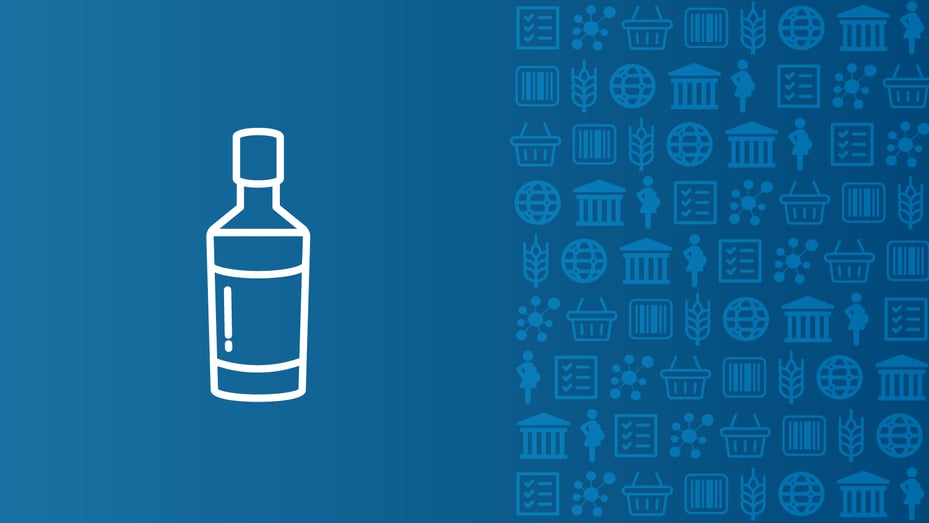
Regulatory and labeling changes ahead for the spirits industry
|
Product Lifecycle Management
|
Food & Beverage
Posted By:
Trace One

Alcoholic beverage labeling and advertising regulations continue to evolve. This creates a challenge for companies that need to manage product lines in different markets. But with the right tools, it’s possible to stay abreast of regulatory changes and deliver compliant labels that accurately reflect product claims.
Changes ahead for the spirits industry—on multiple fronts
In February 2022, the Alcohol and Tobacco Tax and Trade Bureau published rules intended to “improve the clarity and usability of regulation, liberalize certain requirements, and assist industry members in submitting compliant label and formula applications.”
What does this mean for manufacturers? In part, labels must now include some of the following:
- Adding a definition of “grain” to the distilled spirits regulations that includes all cereal grains, as well as the seeds of the pseudo-cereals amaranth, buckwheat, and quinoa
- Allowing the use of designations in accordance with trade understanding, rather than statements of composition
- Creating a class for distilled spirits “specialty products”
Global regulations and labeling requirements are also shifting.
For example, the World Health Organization has recommended health warning labels to raise consumer awareness about the potential negative consequences of alcohol—and more than 47 countries have policies that require such labels.
In the EU, for example, allergen labeling rules also apply to beverages containing more than 1.2% by volume of alcohol.: alcoholic beverages containing sulfur dioxide and sulphites at concentrations of more than 10mg/l or mg/kg must be labeled “Contains sulphites” or “Contains sulphur dioxide”.
All of this becomes a complicated regulatory sea to navigate. Failing to do so means delays and possible product recalls.
Also some details may be very specific, like for China, where Mandatory Warning Statements: the following and other warnings must be on the bottle in Chinese: "Excessive drinking is harmful to health" or "Pregnant women and children shall not drink".
Staying current in a dynamic marketplace
Stakeholders within the spirits industry need to keep up to date with changing requirements to ensure their products satisfy consumer demand and meet compliance regulations—and the right technology can help.
Robust, state-of-the-art tools such as Trace One Devex PLM make it possible to stay current with regulation, standards, and labeling changes—and ahead of the competition. Trace One Devex PLM can surface country by country differences and offer verification for each item on a label. It can also update materials automatically as laws change.
There are also solutions to alert you to changes within specific industries, ingredient lists, and markets.
Trace One Regulatory Compliance—a web-based, organized, and structured database created by Trace One—leverages data intelligence to manage regulatory compliance and monitor food legislation. With Trace One Regulatory Compliance, you can easily access information in the Food News Monitoring System (FNMS) and Food Law Library, and receive alerts based on personalized queries.
Regardless of the size of your organization’s regulatory team, offerings like Trace One Regulatory Compliance and Trace One Devex PLM can save you time and headaches.
Regulators aren’t the only ones looking at labels
New changes to policy and law will continue to disrupt the industry, and companies looking to stay in business around the globe will need to rely on stakeholder expertise and technologies like Trace One Devex PLM and Trace One Regulatory Compliance.
But there’s another authority companies need to appease.
Consumers are showing a heightened interest in seeing nutrition and health information on product labels. Much like regulation, these interests differ by region. A wine-related example from the NIH’s National Library of Medicine, makes this point: "These differences are not only linked to the geographic origin of the consumers, or to socio-demographic variables, but are also related to wine consumption habits, attitudes towards nutritional information, and the degree of involvement with wine.”